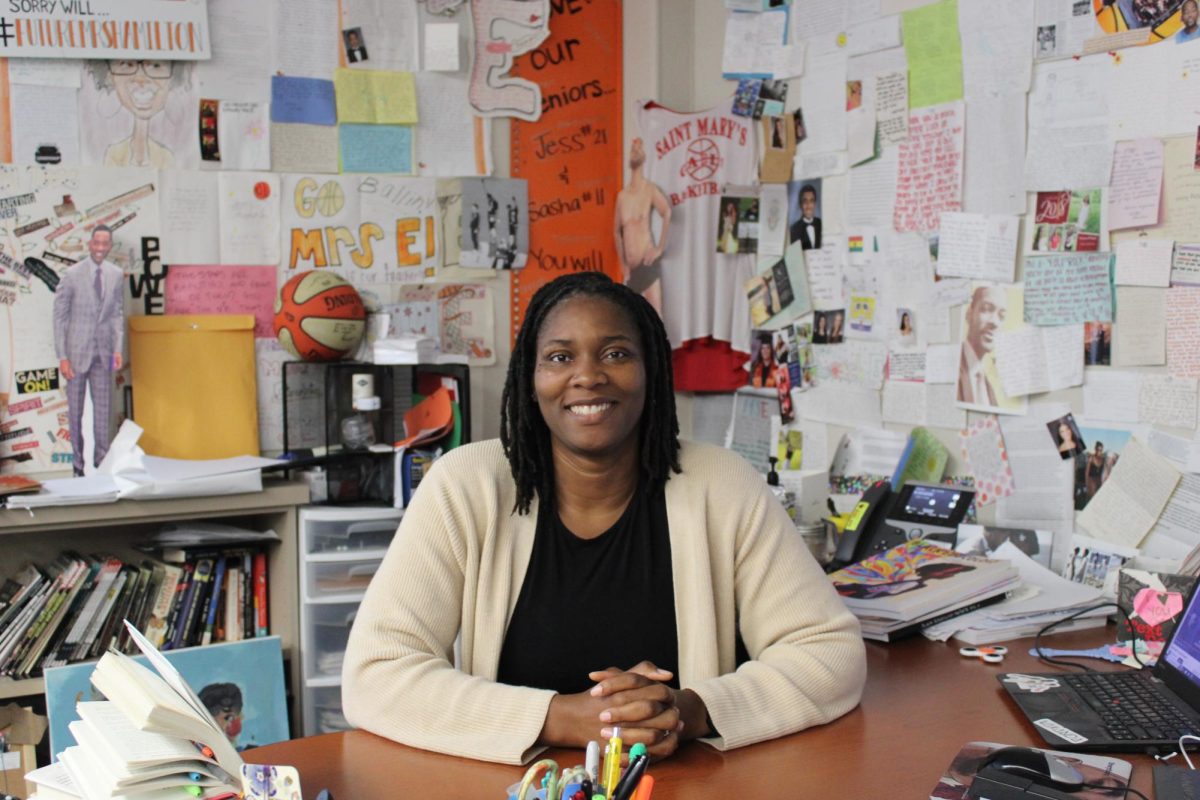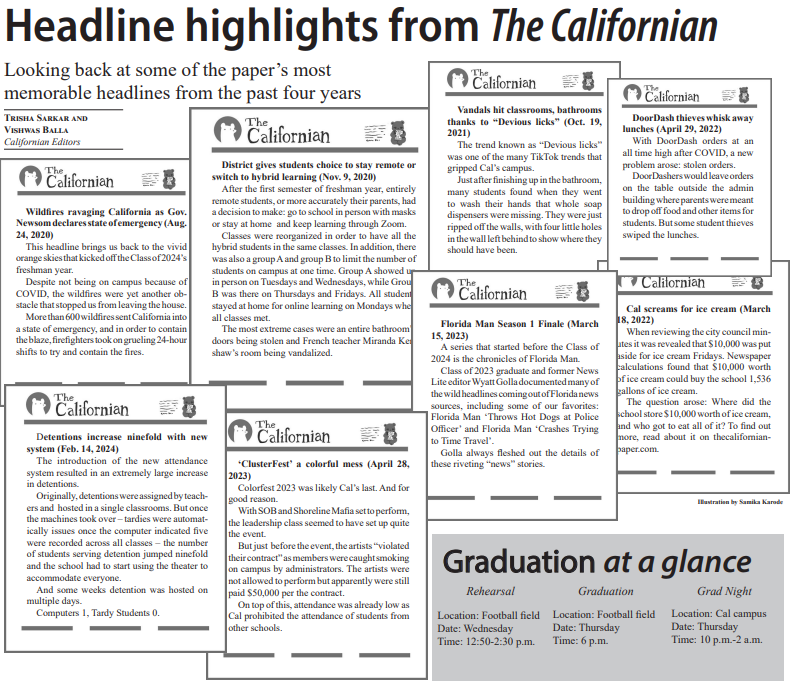Jen Hight
Online Editor
Everybody has heard of the Eagle Scout, the highest award a Boy Scout can achieve. But very few people have heard of the Girl Scouts Gold Award.
The Gold Award is the equivalent to the Eagle Scout. It is the highest possible award that can be earned in Girl Scouting and one of the most difficult.
There are five Gold Award recipients at Cal High in the graduating class of 2012. The recipients of this project are seniors Sofia Lofaso, Sienna Gerbert, Jennifer Hight, Christine Homan, and Vaishnavi Sitarama.
Lofaso’s project was a summer music camp for underprivileged children. Homan worked with the Montevideo Elementary school’s student council to collect supplies for their sister school at Bakepoint.
Sitarama helped middle school and early high school students get motivated to enter college. S. Gerbert made a searchable database for the district for the Safe Schools Plan to help build character. Hight created a self awareness and self defense workshop and presented it to high school students.
“It’s pretty much an open project,” said Lofaso, “It’s up to you.”
To earn this award, girls must complete the Studio 4B challenge which focuses on the girls empowerment. The challenge was created to prepare the girls to start this award, and initial project ideas were created during this time.
After that the girls decide on the project. The only parameters are that the project must be able to help the girls community in the long run.
“Each girl’s Gold Award project is unique to them and their community,” said Troop 31083 leader Lynnette Gerbert and Gold Award recipient.
Choosing a project is the hardest part. Finding something to be passionate about while helping the community is difficult, especially because of the few restrictions placed on the project.
Living with an Eagle Scout, I was aware of all the tiny little details he needed to complete to get his project approved. Working on my Gold Award, I remember finishing one aspect of the project and then realizing I had no idea what to do next.
There is little guidance from the Girl Scout council for getting a project approved. Most of the guidance comes from the Troop Leader or the girl figures it out herself.
After the project is approved, the girl starts working on it.
A minimum of 62 hours must be utilized for this project as the girl works through it. The girl must demonstrate leadership skills and keep a tight schedule to complete the project on time.
Because of the few guiding lines, the project is a nightmare to complete.
Lofaso said the hardest part of her project was formating what she needed to do from beginning to end.
There are lots of phone calls to groups and organizations hoping to set up dates to work with. I spent two weeks frantically emailing Youth to Youth and She’s All That, hoping to present to them.
“No one ever called me back,” said Homan about the Montevideo student council. “Ever.”
Sitarama faced the same problem. None of the college officials she talked to called or emailed her back, and she often had to go meet with the officials face to face to get the information she needed.
To make it worse, revisions have to be made through the council.
“The hardest part was probably when I to revise the project and get approval from the Girl Scout Council,” said S. Gerbert.
The Girl Scout Council takes an incredibly long time to respond. Half of my project time was spent waiting for the Council to get back to me and give me the all clear to move ahead with the project.
“I have yet to meet a young lady who has her project go perfectly from start to finish,” said L. Gerbert.
All of the girls who received their awards had to make revisions at some point in their project, whether from bad planning at the start or a lack of communication between the girl and the group she’s trying to work with.
L. Gerbert said good communication skills are vital to this project.
“The girls learn to speak both effectively and and communicate their point, but also listen carefully,” said L. Gerbert. “In addition, they learn that everyone has a communication style and way they like to communicate.”
As soon as the girls complete their 62 hours, they can send in their final report to receive their award. And then the waiting game to see if it has been approved or not starts all over again.
A letter comes in the mail alerting the girl if her project has been approved, and if it hasn’t she gets to send it back in again.
Through all of the hard work each girl puts in to receive this award, it gains little recognition. The Eagle Scout will always be praised for his project, told how much he accomplished.
But the Girl Scout mentions the Gold Award and is given puzzled smiles and little to no recognition.
This happened all the time when I was working on this award. My brother was working on his Eagle Scout at the same time.
Everytime it came up in conversation, my brother was questioned about what he did and told how he helped the community. Very few people talked to me about what I accomplished.
And even with the focus on the Eagle Scout, five girls have earned this award in our graduating class. They dealt with the lack of guidance and communication, formated an entire project by themselves, and completed it.
“It (Gold Award) means working with your community to do what you love and make a difference,” said Homan.
Lofaso said she learned organizational skills from her project, along with how to be a more effective teacher.
S. Gerbert said finishing her Gold Award symbolizes her completion of her Girl Scout journey.
Sitarama learned about the importance of a good education and how it will impact the students futures directly.
And for me, the project is a way to make my community a better place to live.
“Earning the Gold Award is is more than just doing a project,” said L. Gerbert. “It is learning vital life skills and, at the same time, doing your part to improve your community is some way.”




